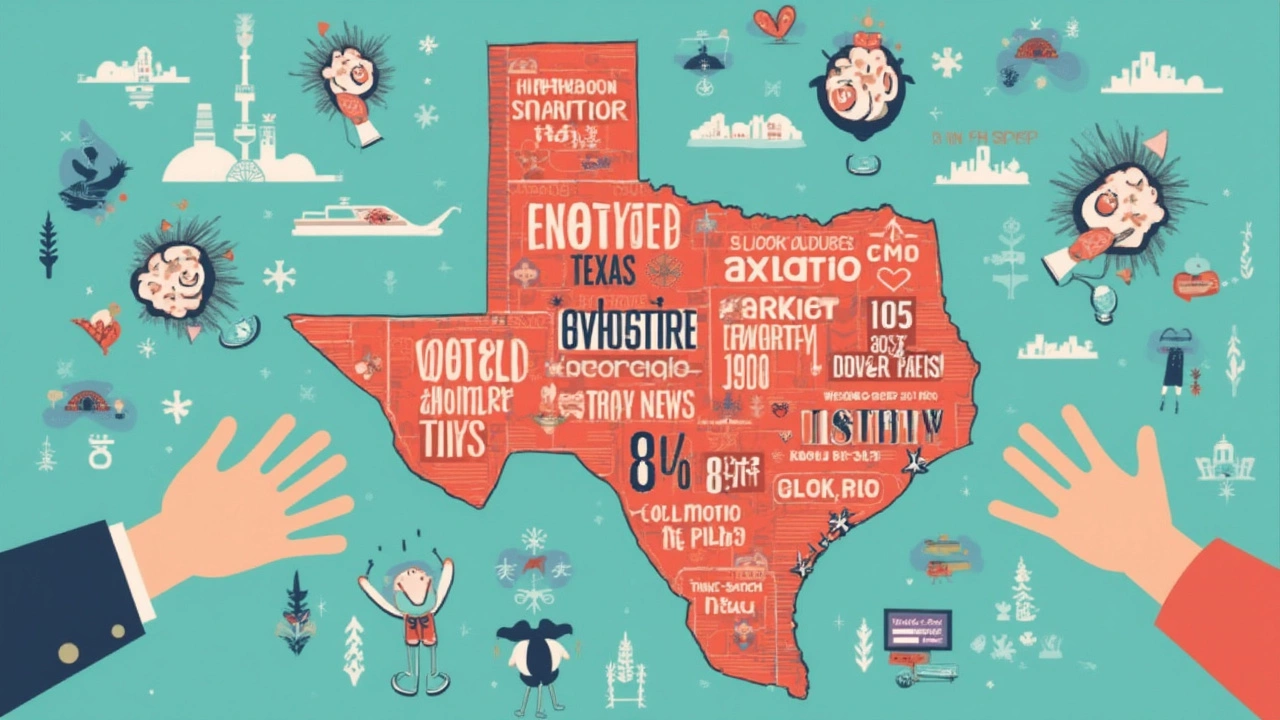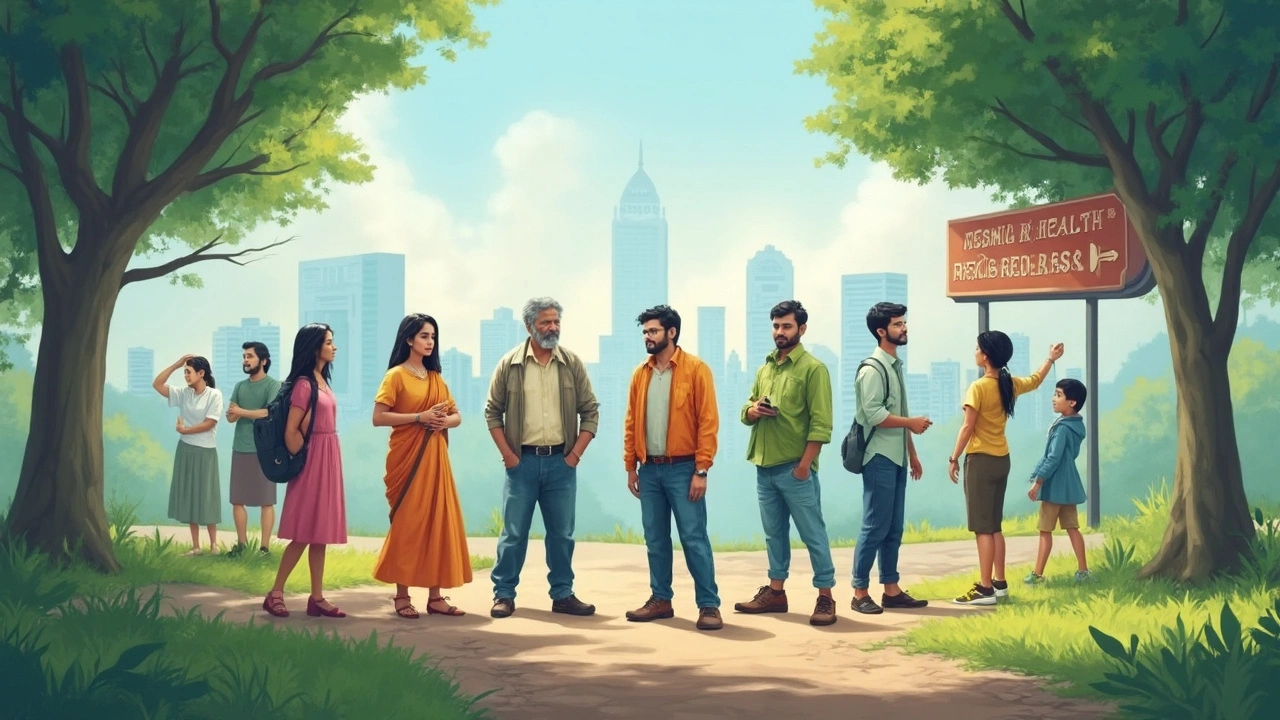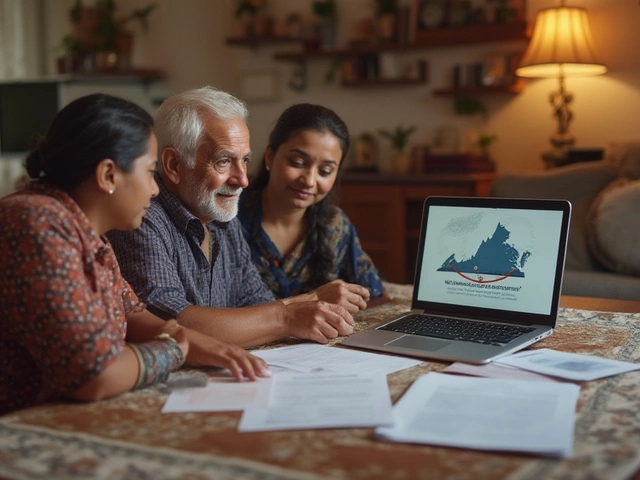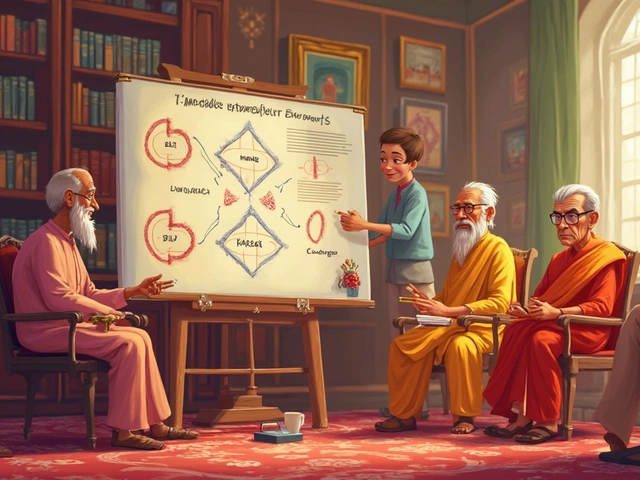Mental health is supposed to be for everyone, right? Now, picture Texas—second largest state, huge cities, and plenty of small towns too. But if you or someone you care about is going through a tough time mentally, the support you get in Texas can be a real wild card.
In national reports, Texas usually falls in the bottom third when it comes to mental health help. That means more people here struggle to get care, pay for it, or even find out what kind of help exists. It’s a big gap, and it doesn’t just affect people in the news. This is something families, kids, and everyday folks deal with all the time. I see it up close in my own circle, with neighbors and even with my kids’ friends—sometimes help is missing when it matters most.
If you’re reading this, maybe you’ve been hunting for a therapist, trying to find emergency support, or just want to know what’s out there. It can feel confusing and super frustrating, especially when time is of the essence. The truth is, a lot of people in Texas need to get creative to track down real help, and sometimes charities are the only lifeline.
- How Texas Ranks in Mental Health Care
- Why the Numbers Matter: Real-Life Impact
- Barriers Texans Face
- Charities Making a Difference
- How to Find Help—Fast
How Texas Ranks in Mental Health Care
If you look at most national rankings, Texas doesn't score very high when it comes to mental health care. Based on the annual report from Mental Health America, Texas was ranked 46th out of all 50 states in 2024 for access to mental health care. That’s near the bottom of the country. The main reasons? Not enough mental health professionals, high numbers of uninsured adults, and long waitlists for the help that IS available.
Let’s dig deeper into the details. Texas has about one mental health care provider for every 830 people, compared to the national average of one for every 390 people. That means if you're looking for help, there's a good chance you're waiting behind a lot of other people who need it too. In many rural parts of the state, there might not be a single psychiatrist or licensed counselor for miles.
Here’s what else stands out:
- Over 57% of adults with a mental illness in Texas got no treatment last year. That’s higher than most other states.
- The state spends less per person on mental health services compared to the national average—about $40 a year versus $125 for some other states.
- Kids are also feeling the fallout. Texas ranks particularly low in youth mental health care, with long waitlists for school counselors or therapists who take insurance.
Even big cities like Houston, Dallas, and Austin have their own challenges. Sure, there’s more support, but the demand far outweighs what’s actually available. If you live in a smaller town, finding help is like searching for a needle in a haystack. This isn’t just a numbers game—it means real people are slipping through the cracks every day.
So, if you’ve ever felt like the system is stretched thin, you aren’t imagining it. When searching for Texas mental health help, you’re up against real shortages, complicated insurance rules, and often, long waits just for a first appointment.
Why the Numbers Matter: Real-Life Impact
When people talk about Texas ranking low in mental health care, it’s not just some boring statistic. It’s stuff you feel every day—long waits, high costs, and folks just not getting the support they need. According to Mental Health America’s 2024 report, Texas was ranked 41 out of 51 for access to mental health care. That puts it in the bottom fifth of all states plus D.C. It basically means more Texans are stuck without care compared to most of the country.
Kids have it tough, too. More than 70% of Texas kids with major depression don’t get any care at all. That’s not just a number; it’s students missing school, struggling at home, or ending up in the ER. My son Zephyr had a classmate last year who waited six months to get a counseling appointment. That’s normal here, not the exception.
The gaps hit rural areas especially hard. In some counties, you can drive for hours and still not find a psychiatrist. Even in the big cities, clinics are slammed—sometimes there’s just one therapist for every hundreds of people who need help. And don’t get me started on insurance: Texas has one of the highest rates of uninsured adults, which makes the process even messier.
If you’ve been told to “try a hotline” or “look online for help,” you’ve seen the cracks firsthand. Hanging up after hours on hold, or learning your closest provider is 200 miles away, gets old fast. These aren’t just inconveniences. They’re reasons why Texas has higher rates of untreated mental illness, self-harm, and ER visits than most states. Texas mental health struggles show up in every school, workplace, and neighborhood.
When you hear the rankings, think real life: late-night hospital visits, kids falling through the cracks, and families stretched past their limits. The numbers aren’t abstract—they show what’s actually happening to real people, right now, all across Texas.

Barriers Texans Face
Getting mental health help in Texas isn’t as simple as it should be. One of the biggest hurdles: the state has one of the lowest rates of mental health care access in the entire country. According to the 2024 State of Mental Health in America report, Texas ranked 41st out of 51 (50 states plus D.C.) for overall mental health support. Even worse, more than half of adults who need help aren’t getting it.
So, what’s actually getting in the way? Here’s what people run into again and again:
- Cost: Therapy, medication, and even just talking to a professional can be expensive, especially for folks without good insurance.
- Long Waits: Some Texas counties don’t have enough therapists or clinics, so waitlists can stretch for weeks or months.
- Insurance Gaps: Texas still has a high rate of people without adequate health insurance, making mental health care tough to get—or keep—if you change jobs or have gaps in coverage.
- Stigma: In some communities, mental health is still seen as something you just don’t talk about. That keeps people silent when they really need support.
- Limited Rural Resources: People in small towns often have to drive hours to find a psychiatrist or counseling center, if there’s even one nearby.
Here’s a look at some hard numbers that really show where Texans are getting stuck:
| Barrier | Texas Data (2024) | National Average |
|---|---|---|
| Adults with Unmet Mental Health Needs | 57% | 44% |
| Children (aged 3–17) with Unmet Needs | 68,000+ | -- |
| Counties with No Psychiatrist | West Texas: Over 50% | ~24% |
| No Insurance Coverage (Adults) | ~18.4% | ~11.7% |
It’s not just numbers. If you’ve ever tried signing up for state programs or called around looking for a counselor, you know how fast you can hit a dead end. People report getting three-minute phone consults after waiting for weeks, or being given a ‘call back later’ when it’s urgent. Kids especially end up on waitlists that feel never-ending.
The good news? Some charities fill in where the system falls short. But for many, these barriers create long, stressful journeys just to get basic help.
Access to solid Texas mental health resources still depends a lot on where you live, how much money you make, and whether you have people in your corner willing to help push through the red tape.
Charities Making a Difference
When it comes to Texas mental health help, local nonprofits pick up a lot of the slack. Government programs leave gaps—especially for people without good insurance. That’s where charities really step in with real support, sometimes way faster and easier than official channels.
One big name is the Mental Health America of Greater Houston. They’ve been around since 1954 and focus on everything from counseling to helping folks navigate the system and even running mental health first aid classes. Another key player is The Harris Center for Mental Health and IDD, which serves Houston and Harris County. They have regular crisis lines, mobile teams that can show up in emergencies, and support groups for specific challenges like depression, anxiety, or substance use.
For teens, the Grant Halliburton Foundation does a ton of work educating parents, teachers, and kids on spotting signs of trouble early. Dallas-based NAMI Texas (the state branch of the National Alliance on Mental Illness) makes sure families and sufferers don’t have to fight alone. They host peer-led support groups, do advocacy work, and publish easy-to-follow guides for finding local therapists or crisis centers.
Charities in Texas also understand how tough access can be in rural areas, so some offer virtual support. For example, Integral Care in Austin offers 24/7 helplines and can connect people with free or affordable counseling online or in person. They also partner with schools to catch issues with kids before things boil over.
Here’s a quick look at what some of these organizations actually provide:
| Charity | Main Services | Who They Help | Contact/Resource |
|---|---|---|---|
| Mental Health America of Greater Houston | Counseling, education, navigation | All ages, urban and suburban | mhahouston.org |
| The Harris Center | Crisis response, support groups, 24/7 helplines | Houston area all ages | theharriscenter.org |
| Grant Halliburton Foundation | Education, school outreach, parent and teen support | Teens and families (mainly Dallas) | granthalliburton.org |
| NAMI Texas | Support groups, advocacy, guides | Statewide (all ages) | namitexas.org |
| Integral Care | 24/7 helplines, crisis teams, counseling (virtual/in-person) | Austin area, all ages | integralcare.org |
If you’re not sure where to start, any of these groups can point you in the right direction. Lots of them also have hotlines and chat services, so even if you’re pressed for time or feel awkward making a call, you can still get answers fast. Seriously, don’t wait for a crisis to look into these resources—it’s way easier to get help or advice before things get really rough.
- Use the helplines or websites above—no fancy insurance or doctor’s note needed.
- Some services are free, while others use a sliding scale. Don’t be shy about asking up front.
- If you don’t feel heard at first, keep trying. Different charities have different strengths.
Charities here aren’t magic fixes, but they do fill gaps no one else covers. Even just knowing these organizations exist can take a load off your mind.

How to Find Help—Fast
Finding Texas mental health resources shouldn’t take hours of Google searches, especially if you’re in crisis or just totally overwhelmed. The good news is, there are solid shortcuts if you know where to look. Let’s break down the fastest ways to get real support right now—these work whether you need a quick phone call, a local place to walk in, or options for your kids.
If it’s urgent—like, you or someone you know is in immediate danger—skip everything else and call or text 988. Yep, it really is that quick. The 988 Suicide & Crisis Lifeline is available 24/7, and they connect you not just to help, but to real people who know Texas systems.
For kids and teens, check schools first. Public schools in Texas are legally required to provide mental health support services or at least point families to them. If your child’s struggling, ask for the school counselor—they’re trained to steer you to therapists, crisis lines, and state-supported groups geared towards youth.
Now, if you’re looking for everyday support, not just emergencies, here are your fastest practical tools:
- Find a Local Mental Health Authority (LMHA): Every county in Texas has one. These are state-funded centers where you can walk in, call, or set up appointments for all ages. Some offer services on a sliding scale if you’re worried about cost.
- Charity Hotlines: The Texas chapter of the National Alliance on Mental Illness (NAMI) is a real lifesaver. You can call, text, or email. They know the ins and outs of what’s free, what’s covered by Medicaid, and where the best support groups are.
- Online Directories: Sites like Mental Health Texas (mentalhealthtx.org) let you search by ZIP code, price, and service type. It’s not just for doctors—support groups and peer specialists show up here too.
Here’s a simple table to make those immediate help options clearer:
| Resource | How to Access | Cost |
|---|---|---|
| 988 Crisis Lifeline | Call or text 988 | Free |
| LMHA | Find local center at hhs.texas.gov | Usually free/low-cost |
| NAMI Texas | Call 1-800-950-NAMI | Free |
| Mental Health Texas Directory | Search at mentalhealthtx.org | Free |
No waitlists, no insurance—some lines take you straight to a professional. If you’re more comfortable with texting, ask the operator if there’s a text line or chat available. They’ll usually know.
“You shouldn’t have to be rich or lucky to get the help you need,” says Dr. Octavio N. Martinez, director at the Hogg Foundation for Mental Health, “That’s why public hotlines and local mental health authorities matter so much in Texas.”
If time isn’t critical but you want solid support, try peer groups through local charities. Peer support is proven to help, especially if you’re feeling alone or misunderstood. And if you’re already waiting on a therapist appointment, these resources can hold you over.





